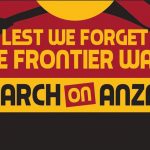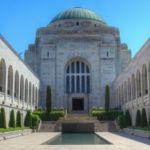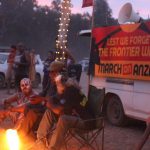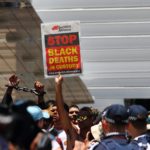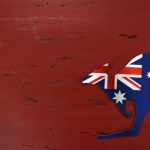“Australia Day No Longer Exists”: An Interview With Gomeroi Activist Gwenda Stanley
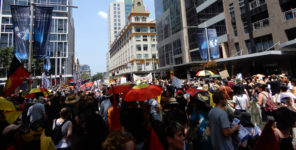
The inner west bus ride heading into Sydney’s CBD on 26 January spoke of one thing, First Nations resistance. There were numerous passengers seated inside the vehicle wearing shirts emblazoned with the Aboriginal flag, and this was both Indigenous people and the non-Indigenous.
As the bus made its way up Broadway, standing at a stop on the roadside were two young freckle-faced Anglo girls. And both of them were sporting stencilled flags on their cheeks. But, unlike one would have expected not so long ago, there were no Union Jacks, but rather yellow suns.
And the bus soon stopped beside Hyde Park, where an estimated 10,000 people were gathered for the Invasion Day Warrang-Sydney rally. There were protests like this involving tens of thousands going on right around the continent, and indeed, in international cities like London and Berlin.
Sovereignty never ceded
“We thank you for your support here today in advocating and elevating the voice above the grassroots collective,” Wankamara elder Albert Hartnett told the crowd. “We are family. We are parents whose kids have been given death sentences and classed as criminals on our own lands.”
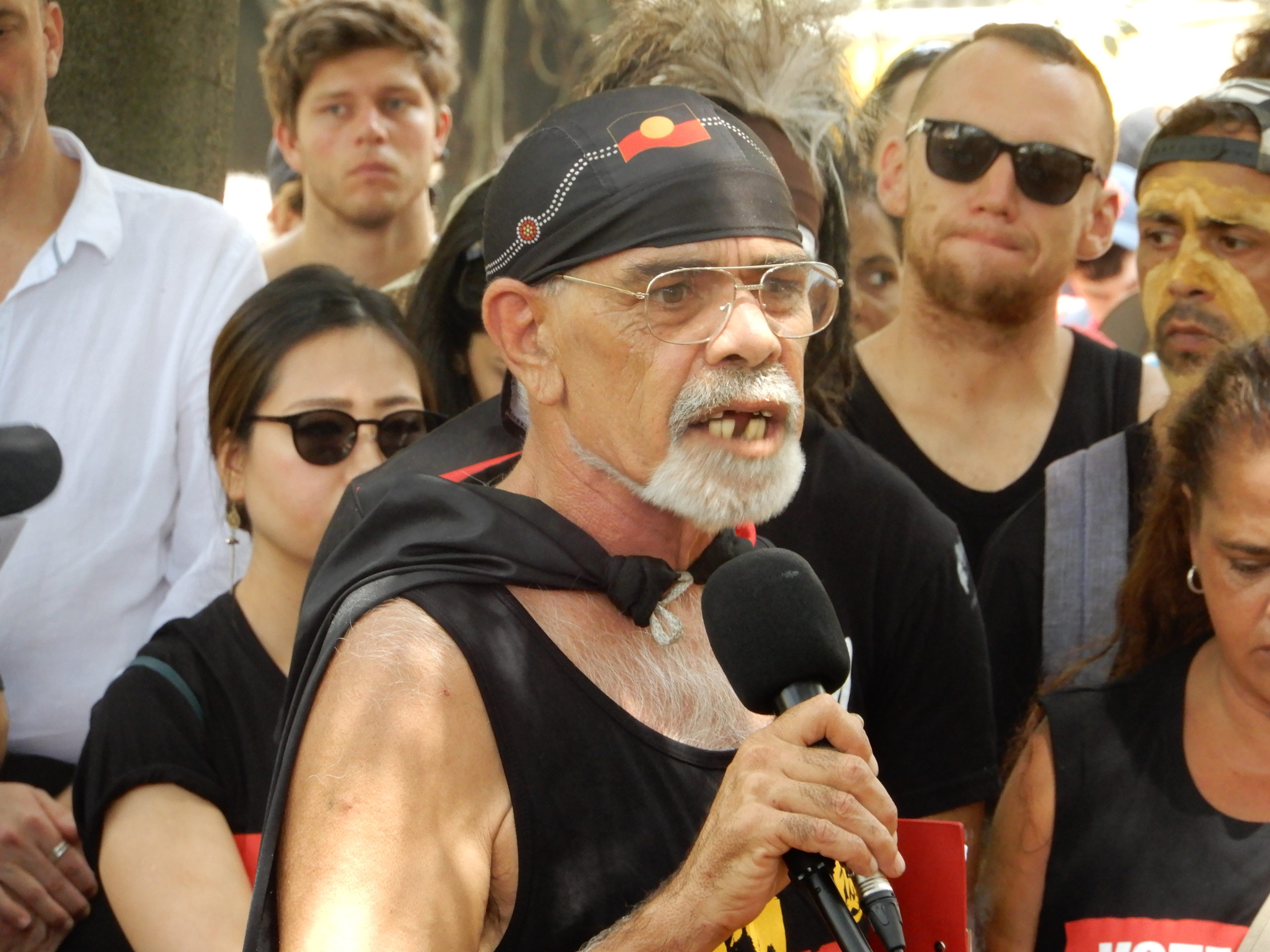
The First Nations activist then led the march through the city streets in the blistering sun towards the Yabun festival. And as the first protesters made it to the entrance of Victoria Park, looking back, the march stretched out as far as the eye could see, all the way to Central Station.
A Day of Mourning
First Nations woman of resistance Gwenda Stanley also led those marching. The long-time activist explains that on 26 January 2012 at the 40th anniversary gathering of the Aboriginal Tent Embassy in Canberra, those assembled were told to go back to communities and begin mobilising.
And just eight years later, the reinvigorated Aboriginal resistance movement has been so effective that on Sunday in central Sydney, Australia Day was a thing of the past, as far as those gathered in Hyde Park south were concerned.
Sydney Criminal Lawyers spoke to Gomeroi woman Gwenda Stanley on the day following the march about the extent to which the movement has grown over the last decade, how the rally was about much more than changing the date, and the true meaning of the day being one of mourning.
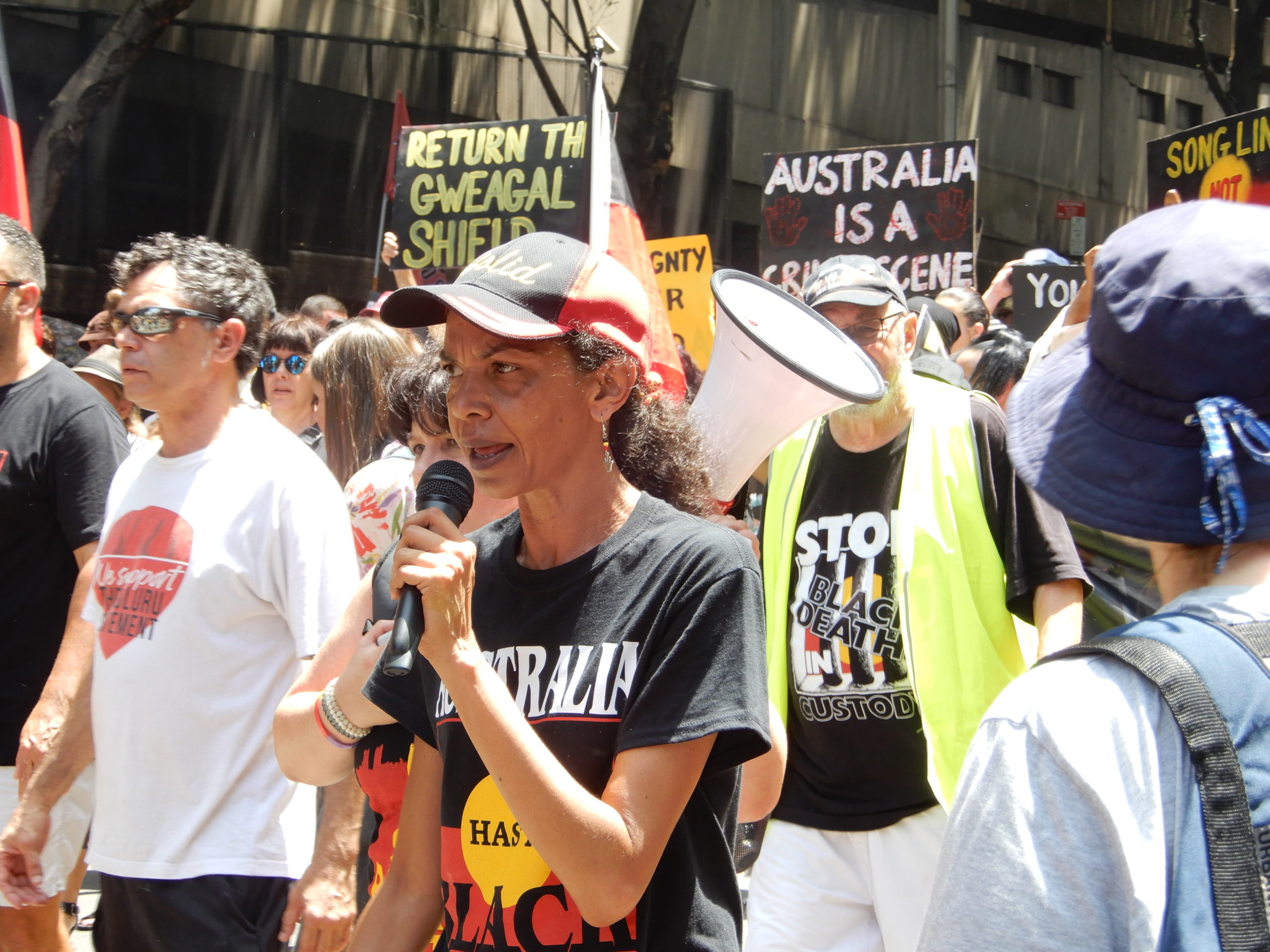
Firstly, yesterday, in the city, everything spoke of Aboriginal protest. There weren’t any signs of Australia Day celebrations that I saw. Gwenda, what do you think about 26 January appearing like a day of First Nations resistance?
In 2012, we brought a fire from Canberra. It was the 40th anniversary of the Aboriginal Tent Embassy. We had the mandate to go back to our communities and start talking about sovereignty, the issues that were happening, and building leadership.
All of us took this back to our communities and we’ve been spreading the word about sovereignty and resistance.
To see the amount of people yesterday, I would say that Australia Day no longer exists.
The black resistance of Australia has risen and awakened. And this has actually shown the government and the world that we’re not quiet, and we’re not going to be laying down any longer.
We are resilient. We are supported by many. And there’s strength in Aboriginal resistance right across this country.
If anyone has watched this grow in the last eight years, they will have seen it from 2012 leading up to yesterday. The Redfern Embassy was the first one to start the protests back up in 2015. And from there, the numbers have grown.
We’ve had many years of complacency and conformity involved in our Aboriginal politics. The reason we do it is it still lacks leadership. We lack true leadership. And we need proper leadership coming from our people – the grassroots people of the community.
What you would have seen yesterday, a lot of those kids are the grandkids of families that marched these streets. As I child, I grew up marching the streets of Redfern.
In 2012, we were given this mandate. And in lighting that fire back up in the last eight years, we’ve knocked Australia Day out.
Australia Day no longer exists in comparison to when I was growing up as a child here.
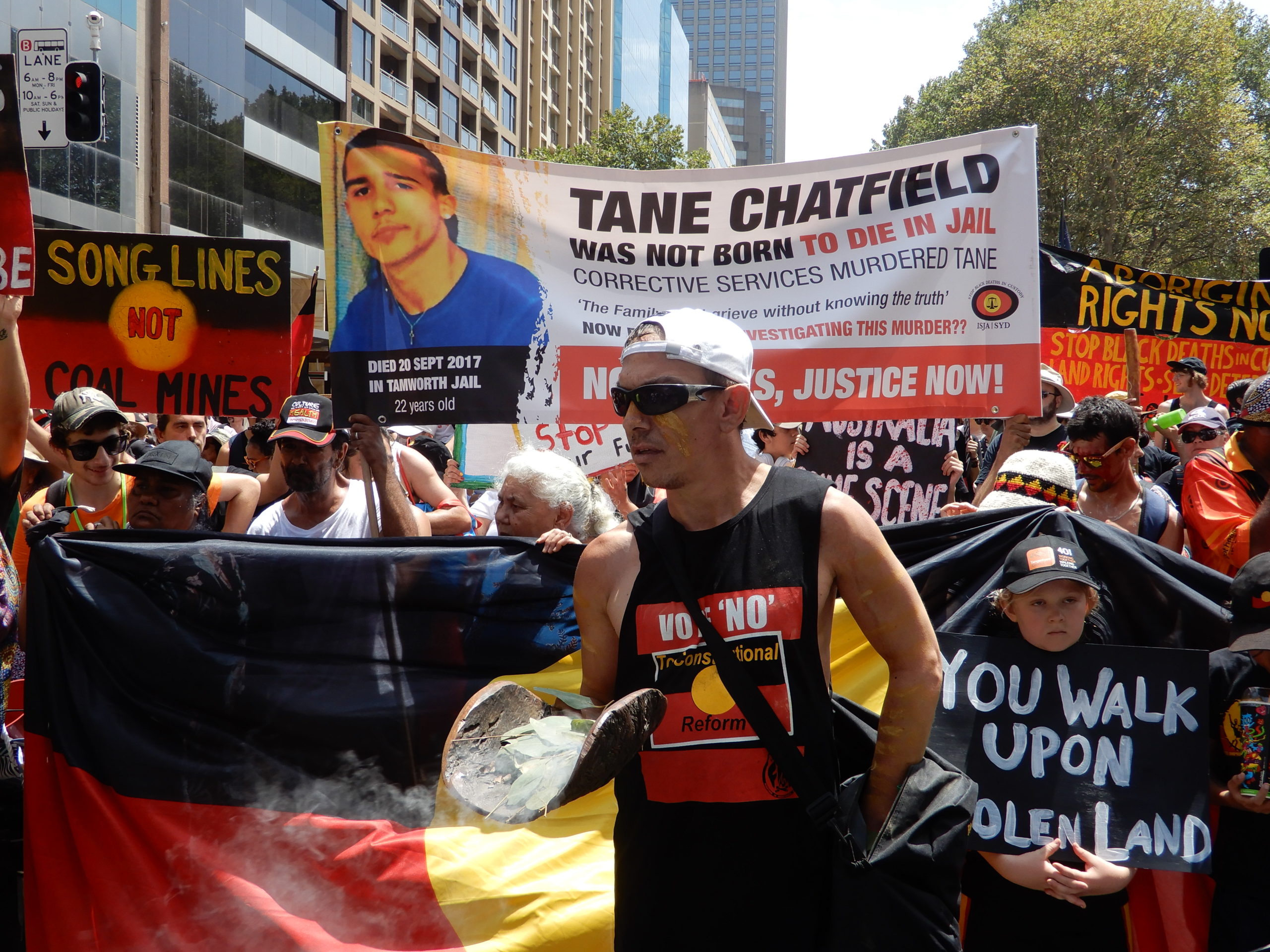
So, what would you say was expressed by the protest yesterday?
Yesterday’s protest was about colonisation. It was about genocide. It was about the war crimes. And the fact that its continuing to happen in this country.
So, would you say the Invasion Day protest is about more than just changing the date? And if so, what would you say that is?
Again, the terminology of the movement has changed over the years. For us, it is a Day of Mourning.
If you look at the 1938 Day of Mourning Manifesto, that was all about giving our people’s land rights back. And I recommend looking at that manifesto, because nothing has changed.
We never called it survival. We never called it invasion. Actually, invasion is a term that came up in recent years.
If you look at the word survival, in 1992, they had the first Survival Concert out at La Perouse, which was a distraction from the 20th anniversary of the Tent Embassy.
But, for us it is a Day of Mourning. And it is a day of genocide. It’s an invasion on my people. It’s murder. It’s a war crime. And it’s a crime that’s still continuing on my people here today.
This movement isn’t new. This resistance isn’t new. For us it wasn’t a day of celebration. It was a day of mourning.
It was a time for our people to reconnect with each other, and let the world know, about the 250 years of colonisation and genocide in this country.
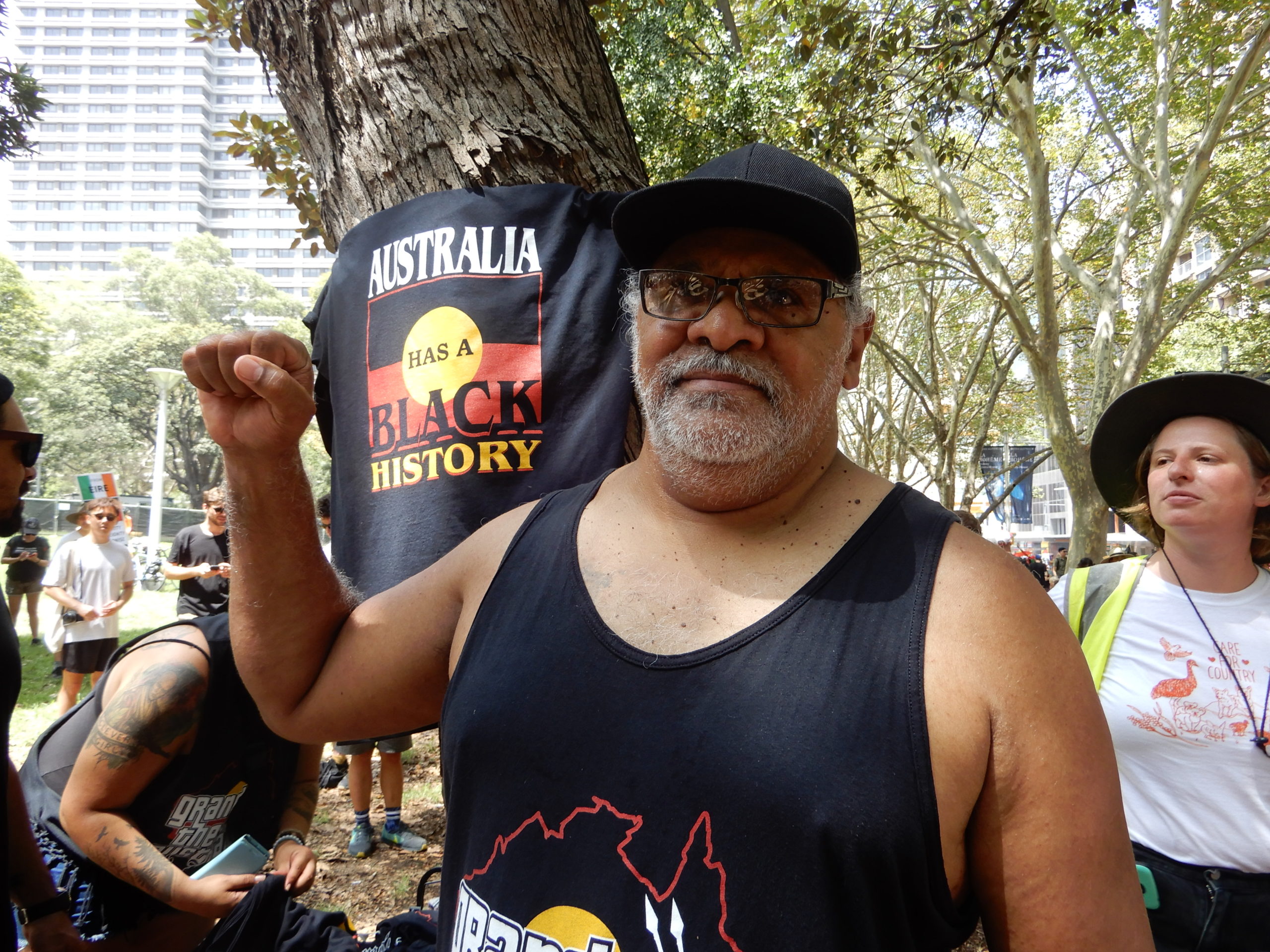
And lastly, Gwenda, given the extent of how far this has developed over the last eight years, how do you see it playing out from here?
Redfern has always been the heart of the black resistance. So, the Aboriginal community of Redfern needs to be leading the movement.
It’s gotten stronger. And it’s become bigger in numbers and the solidarity coming from many different groups in Australia.
It’s now up to the Redfern Aboriginal activist groups that have always been here to be able to pull this together, keep this continuing and working together. And we’ve got to come up with some solutions, rather than going around in circles.
From 1938, that day has been a day of mourning. And then there’s the 1838 Australia Day Massacre at Waterloo Creek, which was a genocide on my people. So, it’s always been a day of mourning.



